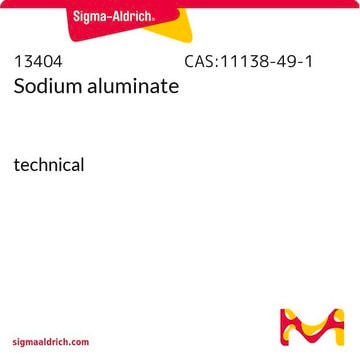287261
Tetratriacontane
98%
Iniciar sesiónpara Ver la Fijación de precios por contrato y de la organización
About This Item
Fórmula lineal:
CH3(CH2)32CH3
Número de CAS:
Peso molecular:
478.92
Beilstein:
1788466
Número CE:
Número MDL:
Código UNSPSC:
12352100
ID de la sustancia en PubChem:
Productos recomendados
Ensayo
98%
Formulario
flakes
bp
285 °C/2 mmHg (lit.)
mp
72-75 °C (lit.)
cadena SMILES
CCCCCCCCCCCCCCCCCCCCCCCCCCCCCCCCCC
InChI
1S/C34H70/c1-3-5-7-9-11-13-15-17-19-21-23-25-27-29-31-33-34-32-30-28-26-24-22-20-18-16-14-12-10-8-6-4-2/h3-34H2,1-2H3
Clave InChI
GWVDBZWVFGFBCN-UHFFFAOYSA-N
¿Está buscando productos similares? Visita Guía de comparación de productos
Descripción general
Tetratriacontane is one of the components of the oil extracts of the red alga Jania ruben.
Aplicación
Tetratriacontane was used as an internal standard in the analysis of a new estrogenic drug, 17 α-ethynylestriol 3-cyclopentyl ether, by GLC method.
Código de clase de almacenamiento
13 - Non Combustible Solids
Clase de riesgo para el agua (WGK)
WGK 3
Punto de inflamabilidad (°F)
Not applicable
Punto de inflamabilidad (°C)
Not applicable
Equipo de protección personal
Eyeshields, Gloves, type N95 (US)
Elija entre una de las versiones más recientes:
¿Ya tiene este producto?
Encuentre la documentación para los productos que ha comprado recientemente en la Biblioteca de documentos.
R H Bishara et al.
Journal of pharmaceutical sciences, 64(7), 1210-1213 (1975-07-01)
A rapid, sensitive, and accurate GLC method of analysis of a new estrogenic drug, 17 alpha-ethynylestriol 3-cyclopentyl ether, was developed. The drug and the internal standard, tetratriacontane, are dissolved in chloroform, and an aliquot is heated with N-trimethylsilylimidazole at 80
N Ulku Karabay-Yavasoglu et al.
Phytotherapy research : PTR, 21(2), 153-156 (2006-11-28)
The methanol, dichloromethane, hexane, chloroform and volatile oil extracts of the red alga Jania rubens were tested in vitro for their antimicrobial activity (five Gram-positive, four Gram-negative bacteria and Candida albicans ATCC 10239). GC-MS analysis of the volatile components of
Johannes Niebler et al.
Phytochemistry, 109, 66-75 (2014-12-04)
Frankincense has been known, traded and used throughout the ages for its exceptional aroma properties, and is still commonly used in both secular and religious settings to convey a pleasant odor. Surprisingly, the odoriferous principle(s) underlying its unique odor profile
Nuestro equipo de científicos tiene experiencia en todas las áreas de investigación: Ciencias de la vida, Ciencia de los materiales, Síntesis química, Cromatografía, Analítica y muchas otras.
Póngase en contacto con el Servicio técnico





